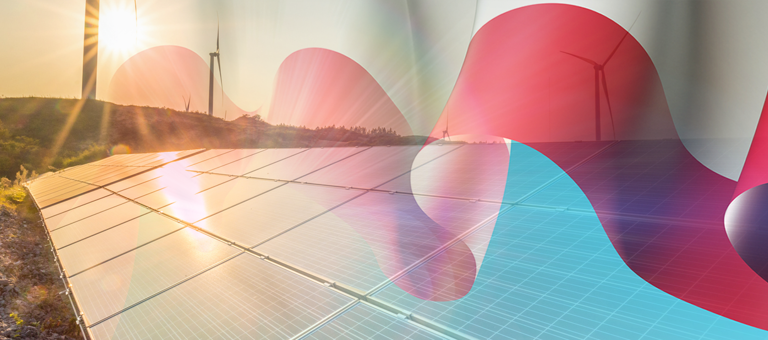
Our Analysis Predicts Solar Capacity to Win Over Wind in Poland's Upcoming Energy Auctions
6 November 2020
According to Poland’s Council of Ministers regulation, the country is expected to hold two renewable energy auctions this year: the first one will take place in less than a months’ time on 26 November, followed by a second auction on 3 December 2020. The total tender volume is 58 TWh of electricity at a value of up to PLN 18.5 billion (€ 4.2 billion). The pay-as-bid reverse auctions are open to onshore wind and solar PV projects. Projects with greater than 1MW capacity are eligible for the large-scale auction, and those with a capacity of up to 1MW are eligible to take part in the small-scale auction. Winners will be awarded contracts for a maximum of 15 years under a two-way Contracts for Difference (CfD) scheme.
Past renewable energy auctions favoured wind
Previous auctions have been effective, resulting in competitive auction prices compared with other European markets such as Germany and France. While wholesale electricity prices have been on the rise since 2016, winning auction bids have stayed below recent price levels. The biggest beneficiaries of past auctions were developers of onshore wind and solar PV projects; over 95% of contracted volumes were awarded to those two technologies in 2019.
Both auctions are open to solar and wind developers, but in practice, onshore wind has predominantly won in the large-scale auction, and solar PV in the small-scale auction. This is because in the past onshore wind’s levelised cost of energy (LCOE, the measure that takes into account the average cost of electricity generation over the asset's lifetime), has been more competitive in the large-scale auction. At the smaller scale however, high development costs of onshore wind farms can be prohibitive and make them less competitive compared to small-scale solar projects.
We expect 2020 to be different – Solar PV to emerge as a major technology in the large-scale auction
In the large-scale auction, the Government expects 800MW of wind and 700MW of solar PV projects to clear. At this stage, we see a sizable pipeline of wind projects – not all of which are eligible – so there is still uncertainty on participating wind volumes. Our analysis suggests that there will be more solar PV capacity, compared to wind, clearing for the first time in this auction.
There are several reasons for this:
- The introduction of the 10H Distance Act from July 2016 – restricting wind farms from being constructed within a radius of below ten times the height of the wind turbine from a building – has limited the growth of fully permitted onshore wind projects in Poland, and
- Building permits expire after five years. Most projects that were at the Ready-to-Build (RtB) stage are likely to have participated in previous auctions; over 3GW of onshore wind projects have won contracts in the last two auctions.
The reduced participation of wind projects with lower LCOEs is expected to put upward pressure on auction bid prices. However, this potential increase may be offset due to increasing competition and auction participation from vertically integrated utilities (VIUs), large independent power producers (IPPs) and institutional players that are expected to be developing solar (mainly) and wind projects at lower LCOEs. Based on the number of projects being issued grid connection conditions in Poland, the solar development pipeline has been growing at an average of over 100MW every month in recent months.
Analysis suggests highest bid prices to increase in the large-scale auction, and to fall in the small-scale scale auction
Overall, our modelling suggests that between 70-80% of the budgeted volume will be procured in the large-scale auction. We project the highest winning bid in the large-scale auction to be in the range of PLN 230-270/MWh - an increase of up to 20% compared to the 2019 auction. Our analysis is based on a merit order of individual projects in the pipeline, and applying assumptions in relation to participation volumes, LCOEs, different types of players and future wholesale power prices.
We are also seeing a surge in solar development activity in the small-scale bracket amongst VIUs and IPPs, with between 2GW and 2.5GW of RtB projects eligible to participate in the small-scale auction. The Polish Government expects 800MW of small-scale projects to win in the auction. We foresee a downward pressure on bid prices with many participants bidding closer to their project LCOEs. A few small-scale onshore wind projects have recently reached the RtB stage and we may see some of them win in the upcoming auction. All these factors are likely to contribute to downward pricing pressure in the small-scale auction bucket, with the highest bidding price potentially closing below PLN 300/MWh for the first time.
Polish renewable energy auctions have thrown up a few surprises in recent years, with significant volumes being procured at competitive prices. Given the changing market conditions, the increase in competition and the relaxation of the 10H rule in the future, the upcoming auctions in a few weeks’ time will most certainly continue that trend.
Medium-term: a narrowing of the price gap in the large- and small-scale auction
As the renewable auction scheme matures, we expect increasing participation from players with access to lower cost of capital, and the price gap between large and small-scale auctions to narrow further. At the same time, higher coal and carbon prices drive electricity prices up, and developers and asset owners are likely to consider other routes to market. Potential alternatives are corporate / utility long-term power purchase agreements (PPAs) with fixed prices, or a fully merchant business model with exposure to wholesale electricity prices. We have seen examples of this in previous auctions where several bidders offered a portion of their capacity in the auction and kept the remaining capacity for alternative routes. We are seeing growing activity in the PPA market, which will increase alternative route to market-options available to generators.
About the authors:
Phil Grant is a Partner in Baringa's Energy, Utilities and Resources sector, Vikash Ahuja is a Director in our London office.
Contact our renewable energy and auction modelling experts to find out more.
Our Experts

Related Insights

Synchronisation of the Baltic power system with Continental Europe opens exciting opportunities for batteries
The synchronisation of the Baltic power system with continental Europe is a significant milestone that opens exciting opportunities for batteries.
Read more
Renewables Market Scanning Report
Which are the most attractive markets for investing in renewable assets globally?
Read more
How can investors and developers capitalise on South Korea’s evolving energy market?
South Korea's energy market is transforming in line with the global shift to renewable energy.
Read more
How ‘Equipment-as-a-Service’ models unlock commercial decarbonisation
Read our latest piece, created in collaboration with Tallarna, to explore the components of an ‘Equipment-as-a-Service’ model, how they can be deployed, and how to increase take-up.
Read moreIs digital and AI delivering what your business needs?
Digital and AI can solve your toughest challenges and elevate your business performance. But success isn’t always straightforward. Where can you unlock opportunity? And what does it take to set the foundation for lasting success?